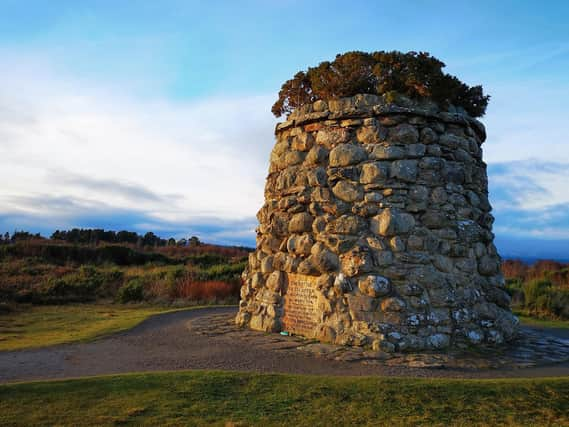Culloden: Warning over buried remains at house site


The Historic Environment Team at Highland Council raised the prospect as a controversial planning application for a house within the historic boundary of the battlefield is set to be decided.
Proposals for a steading conversion at Culchunaig, which sits just to the south of the section of the battlefield owned by National Trust for Scotland, is due to come before councillors on February 3.
Advertisement
Hide AdAdvertisement
Hide AdThe Historic Environment Team raised no objection to the application but said “surviving buried remains” could be impacted by building work at the site.
A statement said: "Despite the negative results of the archaeological work with regard to evidence for the Battle of Culloden, the limited groundworks required for the development may still impact on surviving buried remains.”
It said that the potential for buried remains to survive was “low”.
However, the team recommended that earth removed from the site must be examined by a metal detector as a precaution.
Dr Christopher Duffy, of the Historians Council on Culloden, earlier described a development plan for the Culchunaig site as an “appalling intrusion on this national war grave”.
The Culchunaig area saw 'major action' on the Jacobite right wing during the battle in April 1746 and was the scene of the last fight of Culloden hero Gillies MacBain, who led the Mackenzies on the field and single-handedly killed 13 government soldiers.
The latest house proposed for the Culchunaig site is a traditional steading conversion with the plans significantly scaled-back from a much more elaborate scheme of modern design.
The earlier proposals were approved by the Planning Reporter but then blocked in an unprecedented move by Scottish Ministers who said it had an “surbanising” effect on the sensitive historic landscape.
Advertisement
Hide AdAdvertisement
Hide AdThe landowners quickly came back with an alternative plan which planning officials have recommended should be approved by councillors on February 3.
A report to committee said: “This proposal will sensitively and sympathetically restore a derelict traditional steading building while retaining its character and bringing it back into active use as a single family home.
" While the site sits within both Culloden Muir Conservation Area and the Inventory of Historic Battlefields, this does not mean that no development can take place. It does mean that there is a greater level of scrutiny afforded to any development proposal so that it does not cause unnecessary damage or affect the integrity of the historic battlefield or cause harm to the character and appearance of the conservation area.”
The report said the proposal “preserved the character and appearance of the Conservation Area” and complied with policy designed to protect such historic and cultural assets.
The official support for the house plan comes after National Trust for Scotland u-turned its position on the Culchunaig site and opposed the application.
Clea Warner, Highlands and Islands general manager for National Trust for Scotland, in an official objection, said the organisation “now realised” the high importance of the Culchunaig site given new and ongoing research.
She said: “We wish to object to the revised application, mainly on the grounds that this represents a threat to the historic character of Culloden Battlefield, in light of new and ongoing historic and archaeological research."